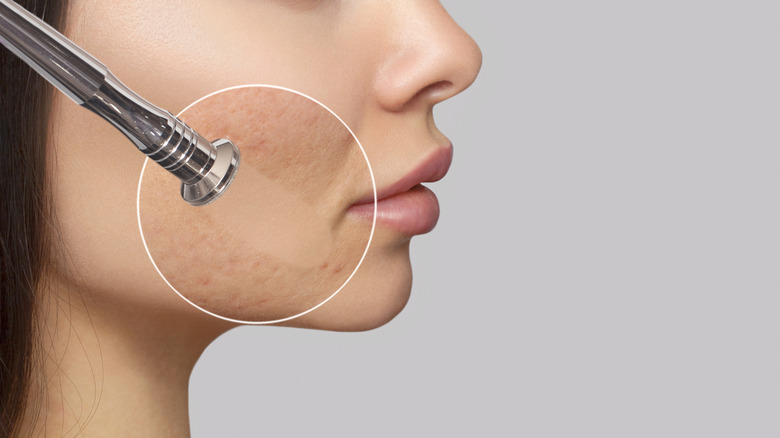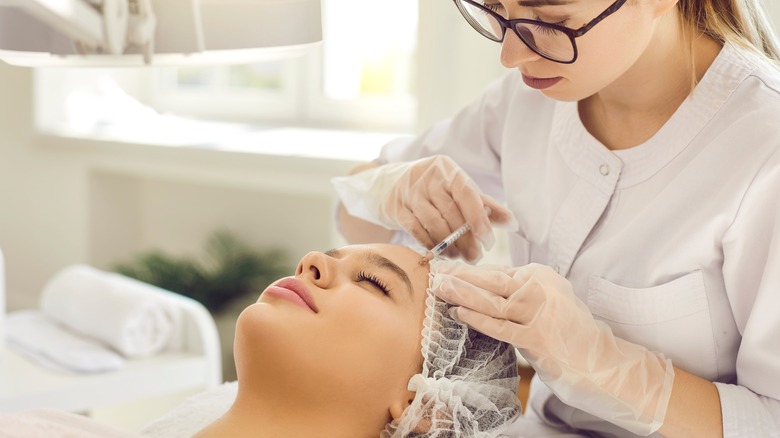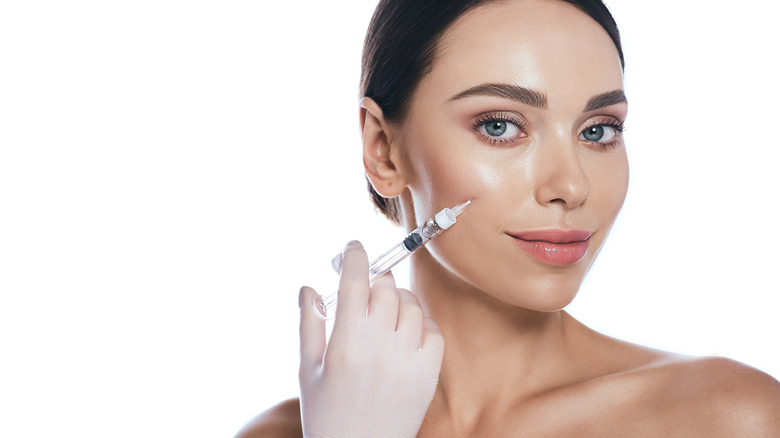Are Dermal Fillers A Safe Solution For Acne Scars?
Acne is a skin condition where the pores become blocked with sebum — ultimately causing pimples on the face, chest, forehead, and shoulders (via Cleveland Clinic). The condition affects around 50 million people annually, making it the most common skin disorder in the United States, especially for teenagers and young adults (via the American Academy of Dermatology). Although acne isn't life-threatening, these tiny spots can leave scars on your skin, leaving life-long psychological effects, according to a 2022 article published in Stats Pearls. The good news is that various treatment options, like dermal fillers, can help eliminate or reduce the appearance of acne scars.
Dermal fillers are gel-like substances injected into your face, offering the skin a smoother and fuller appearance (via Food and Drugs Administration (FDA)). According to the FDA, the fillers break down and become absorbed in your system after the injection, a procedure that may not last over an hour. In 2018, dermal filler injections were among the topmost minimally invasive cosmetic procedures in the United States. (via American Society of Plastic Surgeons). Since they're gaining ground in the U.S., it's vital to understand if dermal fillers are a safe solution for acne scars.
How safe are dermal fillers for acne
According to Healthline, all dermal fillers are generally safe. However, Bellafill is the only dermal filler approved for acne scars in the United States. Since acne affects people differently, it's still important to speak to your doctor or dermatologist to ascertain how suitable Bellafill is for your condition. Also, Healthline advises testing your skin for allergies before the first injection. Just like with many medical procedures, side effects have been reported. They include bleeding, swelling, redness, scarring, skin damage, and necrosis (via the Cleveland Clinic Org).
When undergoing the procedure, it's best to use only a well-trained and reputable surgeon. According to Harvard Health Publishing, dermal fillers procured through uncertified means, especially on the black market, may be fake and contaminated with nonsterile substances like hair gel, which may lead to more severe side effects such as blindness and embolism. Furthermore, dermal filler injected wrongly may enter the blood vessels resulting in irreversible complications, including stroke (via the FDA).
Types of dermal fillers
Dermal fillers come in various types. According to Johns Hopkins Medicine, doctors recommend options based on several factors that include age, skin type, and the intended effect. For example, hyaluronic acid, the most common filler, works best to soften fine lines and creases to restore skin fullness. Poly-L-lactic Acid also works well for anti-aging.
According to the American Society of Plastic Surgeons, poly-L-lactic acid doesn't produce results immediately. It may take over three months to see improvements. You might also require occasional touchups after the first injection, says the society. The same may apply if you opt for polymethyl-methacrylate microspheres (PMMA). The downside to PMMA is that it may be visible under the skin, per the society. All these types of dermal fillers may help treat acne. This is especially true of Poly-L-lactic acid, which stimulates your body's collagen production function, reducing the appearance of acne scars (via Healthline).



